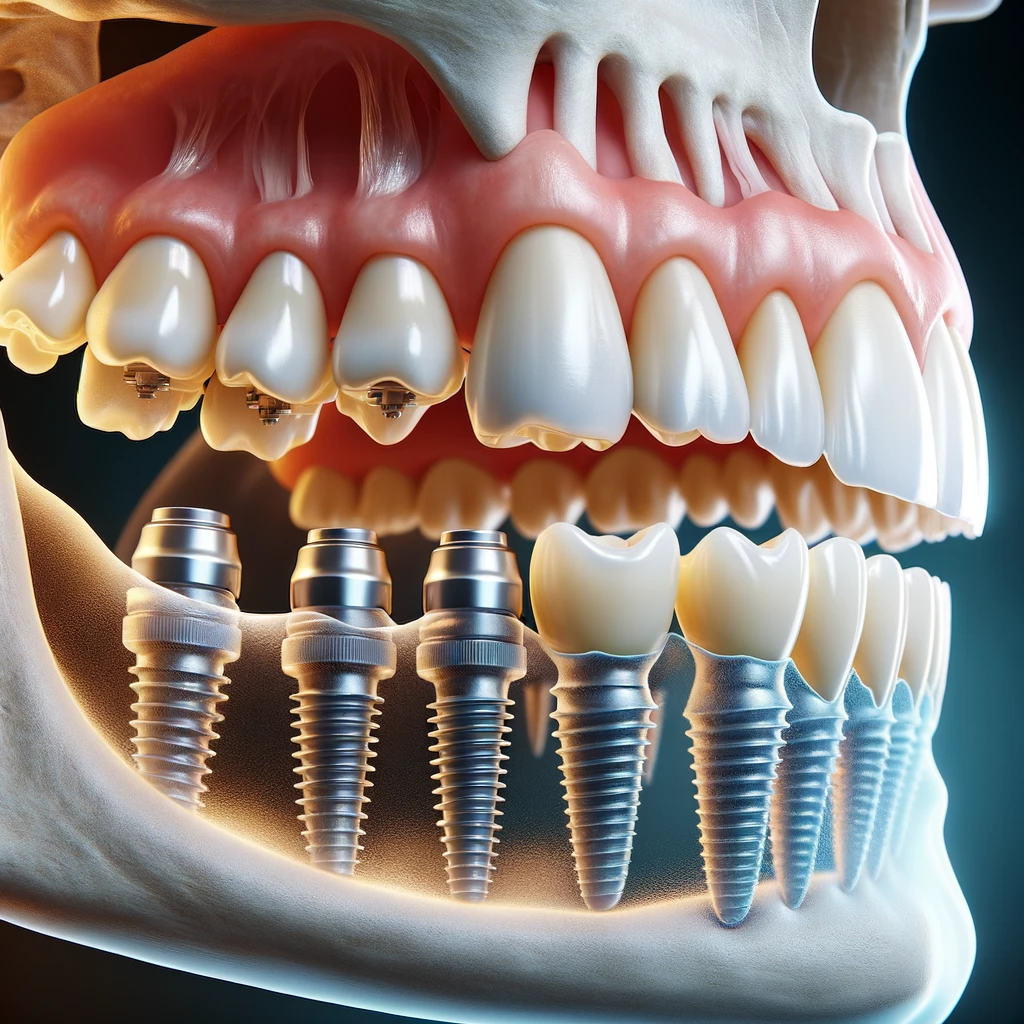Top Guidelines Of Dental Sense
Top Guidelines Of Dental Sense
Blog Article
The Dental Sense Diaries
Table of ContentsGetting My Dental Sense To WorkThe Main Principles Of Dental Sense Dental Sense - QuestionsDental Sense - The Facts
are clinical devices surgically implanted into the jaw to bring back an individual's capability to eat or their look. They offer assistance for artificial (phony) teeth, such as crowns, bridges, or dentures. When a tooth is lost as a result of injury or illness, an individual can experience issues such as fast bone loss, defective speech, or modifications to eating patterns that cause discomfort.Oral dental implant systems are composed of an oral implant body and oral implant joint and may likewise consist of a joint addiction screw. Same day dental implants. The dental implant body is surgically inserted in the jawbone instead of the tooth's root. The oral implant joint is typically attached to the implant body by the joint addiction screw and prolongs through gum tissues right into the mouth to support the attached synthetic teeth
(https://go.bubbl.us/e7bebd/a315?/Dental-Sense)Framework of The Oral Implant System selecting dental implants, speak with your oral service provider regarding the possible benefits and risks, and whether you are a prospect for the treatment. Points to consider: Your general health is an important consider identifying whether you are an excellent candidate for oral implants, for how long it will certainly take to recover, and for how long the implant may stay in place.
Cigarette smoking might affect the healing process and lower the long-lasting success of the dental implant. The recovery procedure for the dental implant body may take a number of months or longer, throughout which time you normally have a short-term abutment instead of the tooth. the oral implant treatment: Thoroughly adhere to the dental hygiene instructions offered to you by your oral company.
The smart Trick of Dental Sense That Nobody is Talking About
Implant failure can result in the requirement for an additional surgery to deal with or replace the dental implant system. Restores the ability to eat Brings back cosmetic look Assists maintain the jawbone from reducing as a result of bone loss Preserves the health of the surrounding bone and gums Helps keep adjacent (neighboring) teeth secure Improves high quality of life Damages to bordering all-natural teeth throughout implant placement Injury to the surrounding cells throughout surgical treatment, such as sinus opening Injury during surgical treatment (for example, fracture of bordering jawbone) Poor function, such as really feeling like the teeth do not attack together generally An experience that the tooth hangs or turning in area arising from an abutment screw Learn More Here loosening Implant body failing (looseness of the implant body) due to systemic infection, which might be most likely in clients with unrestrained diabetics issues as a result of local infection in bone and gums sustaining the implant body because of postponed healing, which might be a lot more likely in patients that smoke Difficulty cleansing the gum tissues around the implant, resulting in inadequate oral health Without treatment periodontal condition Post-surgical numbness due to nerve impingement or damage Constantly alert healthcare companies and imaging professionals that you have dental implants before any type of magnetic vibration imaging (MRI) or x-ray procedures.
FDA is not familiar with any adverse occasions reported for MRI or x-ray procedures with dental implants. Oral implants systems are commonly constructed from products that adhere to international agreement standards of the International Organization for Standardization (ISO) or ASTM International. These requirements have details of what makes a safe product.

A dental implant is a framework that changes a missing out on tooth. With screw-like tools, the specialist inserts a dental implant into the jawbone, and it works as a support for an artificial tooth, called a crown. A tool called a joint attaches the man-made tooth to the oral implant. The crown is personalized to fit the person's mouth and match the color of their teeth.
An Unbiased View of Dental Sense
Some people are not eligible for oral implant surgical procedure. It is for oral cosmetic surgeons to operate individuals with: intense illnessuncontrollable metabolic diseasebone or soft tissue illness or infectionIf these problems are solved, an individual can have the surgical procedure. In, oral specialists avoid operating people with: If individuals with any of the above go through dental implant surgery, there is a higher risk of the implant falling short.

Dental implant surgery is a personalized procedure. Offer you time to heal. Connect the blog post and last crown, bridge or denture.
Next, your surgeon will thoroughly place the dental implant into your jaw. If your dental implant is near the front of your mouth, your dental practitioner will certainly make a short-lived tooth for you to put on up until you recover.
The Greatest Guide To Dental Sense
During the recovery phase, your jawbone needs to fuse to the oral implant. This process can take anywhere from three to 9 months.
Once your dental implant heals, your dental professional can affix the abutment (small connector message) and your last restoration (crown, bridge or denture). This generally takes regarding one hour to finish and may require a 2nd small surgery. You should not really feel any pain throughout your oral implant treatment because your service provider will certainly make use of medication to numb your gums.
Report this page